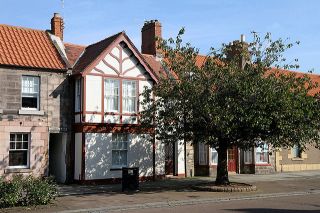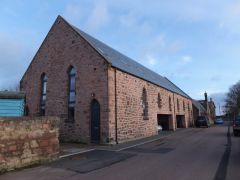
The village takes its name from a medieval hospital (try saying the word like 'hos-pittal' and you'll get the connection). The hospital, dedicated to St Bartholomew, was founded to care for lepers and was in existence before 1234.
We do not know where it was located, and no evidence survives above ground. It was probably located a safe distance from the village itself to avoid the risk of contamination. It may have stood near Spittal Hall. Written records suggest that a pele, or fortified tower, was built to defend the hospital in 1369, but again, no remains of this tower can now be seen.
The three settlements at the mouth of the Tweed; Spittal, Tweedmouth, and Berwick, have closely linked histories. All three had economies based on fishing, though Tweedmouth was blessed with a deep-water dock which served the larger centre of Berwick. By 1657 the town of Berwick was wealthy enough for the Corporation of Berwick to buy the manor of Tweedmouth and Spittal from the Duke of Suffolk for the princely sum of 570 pounds.
The village was once the haunt of smugglers, though now it is primarily a resort, drawing visitors to enjoy the sandy beach. Historically Spital was a centre for the herring fishery, with facilities for curing and smoking herring brought into the port by an active fleet of fishing vessels. Initially, the herring fishery served the local population, but by the 18th century, it expanded to reach markets in London and the continent of Europe.
St John the Evangelist Church
The parish church for Spittal was built in Early English style in 1867 as a daughter house of Tweedmouth, before Spital became a parish in its own right. Before 'Spittlers', as natives are called, had their own church they worshipped in a stable loft. One of the main contributors to the new church was the Mercers Company, and a function room in the church is named for the guild. The distinctive tower was added in 1894.
Even before St John's was built, Spittal had a nonconformist chapel. During the 18th and 19th centuries, the area developed a coal industry, and as workers moved into the area they wanted a new form of worship that seemed more fair and egalitarian than Anglican worship. A chapel was built in 1754 for Presbyterian worship, but this was rebuilt in 1878 as a Unitarian church dedicated to St Paul.
Aside from the churches the best historic features of the area can be found n nearby Berwick, but then, people don't usually come to Spittal for heritage, but to enjoy the delights of a typical seaside resort!






